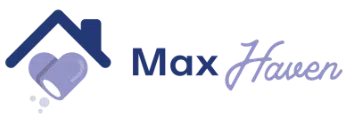The American healthcare landscape is often marred by inefficiencies, and hospice care is no exception. Medication waste, in particular, poses a significant challenge. Medication waste not only incurs unnecessary costs but also contributes to environmental pollution and can cause concerns about the disposal of hazardous substances. Being responsible stewards of resources aligns with the compassionate ethos of hospice care, advocating for a future where care is both sustainable and effective.
However, hospice programs across the nation have a profound opportunity to evolve with a focus on sustainability and cost-reduction strategies related to medication management. By adopting conscientious practices, hospices can streamline their services and enhance the quality of care for patients facing life-limiting illnesses.
Strategies for Medication Management
1. Comprehensive Medication Reviews (CMRs)
The goal of a CMR is to critically examine every aspect of a patient’s medication regimen. By pinpointing and eliminating superfluous medications, hospices can significantly reduce the costs of pharmaceuticals. CMRs often involve a multidisciplinary team composed of doctors, nurses, and pharmacists who specialize in palliative care. Their collective expertise is focused on ensuring that each medication is aligned with the current needs and goals of the patient’s care plan.
During a CMR, the team considers several factors:
- The Efficacy of Each Medication: Analyzing if the medication is achieving its intended purpose. This is significant as the stages of a patient’s condition progress, potentially rendering some medications less necessary.
- Potential Interactions: Ensuring there are no adverse interactions between drugs that can compromise the patient’s comfort or exacerbate symptoms.
- Dosage Optimization: Adjusting dosages to the minimum effective amount to reduce the chance of side effects and to prevent medication wastage.
- Assessing the Necessity: Examining whether a medication is essential or if it can be safely discontinued, especially when it comes to drugs for conditions that are no longer aligned with the goals of hospice care, such as aggressive, long-term treatments for chronic diseases.
- Relevance to the Patient’s Goals of Care: Making sure that the medication plan fits within the spectrum of palliative care where the focus is on quality of life rather than life extension.
2. Customized Formularies
A well-maintained formulary promotes a lean inventory system. Lean inventory strategies aim to have just enough stock to meet patient needs without excessive amounts that could lead to waste.
In selecting medications for the formulary:
- Long Shelf Life: Prioritize medications with longer expiration dates to reduce the likelihood of having to discard expired stock.
- Multipurpose Medications: Opt for medications that can treat a range of symptoms or serve multiple patient needs.
- Packaging Considerations: Consider the packaging sizes—choosing the smallest practicable size can minimize waste if a medication is discontinued for a patient.
The ecological and ethical responsibility of reducing medication waste is as significant as the financial one. By judiciously managing medication stock, hospices contribute to a more sustainable healthcare system and act as responsible stewards of environmental and economic resources.
3. Collaboration with Prescribers
Prescribers are the gatekeepers of medication use, and their prescribing habits significantly influence both the cost and quality of hospice care. Engaging them in the hospice philosophy and goals can lead to more thoughtful prescription practices tailored to the unique needs of end-of-life care.
Fostering Open Communication
Open lines of communication between hospice staff and prescribers are foundational. Regular discussions enable both parties to stay informed about each patient’s condition, response to medications, and any changes in their care plan. This can be facilitated through:
- Interdisciplinary Team Meetings: Including prescribers in team meetings provides an opportunity for everyone involved in a patient’s care to share insights and make collaborative decisions.
- Feedback Loops: Creating systems for ongoing feedback allows nurses and other caregivers to report back to prescribers on the effectiveness of medications and any adverse effects observed.
Targeted Prescribing Patterns
Collaboration helps establish prescriber awareness about the principles and objectives of hospice care, leading to more focused prescribing patterns that align with palliative care needs. These include:
- Basing Prescriptions on Goals of Care: Ensuring prescriptions are congruent with the patient’s stated goals, such as comfort or symptom control, rather than disease eradication or life extension.
- Adjusting Prescriptions as Needed: As patients progress through different stages of their condition, prescribers should be flexible in adjusting medication regimens accordingly.
Quantity Considerations
One practical area where collaboration can yield substantial results is in the quantity of medications prescribed. By considering the following strategies, prescribers can help reduce wastage:
- Smaller Quantities: Prescribing medications in smaller quantities to match the patient’s expected need, thereby minimizing leftovers in the event of a patient’s rapid condition change or death.
- Discontinuation of Non-Essential Medications: Regularly reviewing and discontinuing medications that are no longer beneficial or consistent with the patient’s current goals of care.
4. Investing in Education
Educating staff about the principles of waste reduction and proper medication management can empower them to make more informed decisions. Continuous education on pharmaceutical advancements can further refine practices to be both cost-effective and environmentally conscious.
5. Adopting Technology Solutions
Electronic Medical Records (EMRs)
Electronic Medical Records are at the forefront of the technological revolution in healthcare. In hospice care, EMRs offer an auditable and accessible record of a patient’s medication history, allowing for:
- Efficient Documentation: Electronic documentation streamlines the entry and retrieval of medication information, saving time and reducing the potential for errors.
- Enhanced Communication: With EMRs, the entire care team can view real-time updates on patient medications, leading to improved coordination and decision-making.
Real-Time Inventory Management Systems
Inventory management software can automate the tracking of medication stocks, providing live updates on what is available, what is running low, and what is close to expiration. This real-time data can:
- Prevent Overstocking: By monitoring usage patterns, hospices can order medications just in time to prevent overstocking and the associated waste.
- Reduce Theft and Misplacement: Automated tracking deters theft and helps ensure medications are accounted for and stored properly.
- Streamline Ordering Processes: With up-to-date inventory levels, automatic restocking or alerts can be initiated, saving time and administrative burden.
Utilizing Barcode Scanning
Barcode scanning technology can be integrated into medication administration protocols, offering:
- Verification: Barcode scanning at the point of care ensures the right patient receives the correct medication at the proper dose.
- Tracking: It allows for meticulous recording of medication usage, which directly feeds into inventory control and waste reduction efforts.
Implementing Telepharmacy Services
Telepharmacy, or the remote delivery of pharmacy services, is becoming an invaluable asset in hospice care. Through telepharmacy, hospices can:
- Access Expertise: Leverage pharmaceutical expertise even in rural or underserved areas.
- Review and Consult: Use teleconferencing tools to conduct medication reviews and consultations effectively, enhancing medication management care plans.
Data Analytics and Reporting Tools
Advanced analytics can transform raw data into actionable insights. By analyzing medication usage patterns, hospices can:
- Predict Needs: Forecast future medication requirements more accurately based on historical data.
- Refine Formularies: Adjust the hospice formulary to better match true patient needs and reduce wastage.
Leveraging Mobile Technologies
Mobile applications can support medication adherence and tracking by:
- Providing Reminders: Alerting staff about medication administration times.
- Monitoring Adherence: Enabling documentation of medication delivery and patient responses.
Embracing Interoperability
Interoperable systems ensure different technology platforms communicate seamlessly with one another. For hospice care, this means:
- Connecting Systems: Integrating EMRs, inventory systems, and other healthcare platforms to work in unison, providing an ecosystem that supports comprehensive care coordination.
MaxHaven: A Vision for Hospice Management
The conversation about reducing medication waste in hospice care is incomplete without considering the role of partners and service providers who align with and support the mission of sustainable and cost-effective care. MaxHaven emerges as a stellar example, a beacon of this transformative vision. By offering flexible, transparent, and specialized solutions, MaxHaven empowers hospices to deliver exceptional care while placing them firmly in the driver’s seat concerning their technology needs and budget.
Their adaptable contracts and pricing models don’t just answer the immediate needs of hospice programs. They beckon to a future where hospices balance compassionate care with astute management—where wasted resources become a relic of the past, and every investment contributes to the enrichment of the end-of-life journey for patients.




